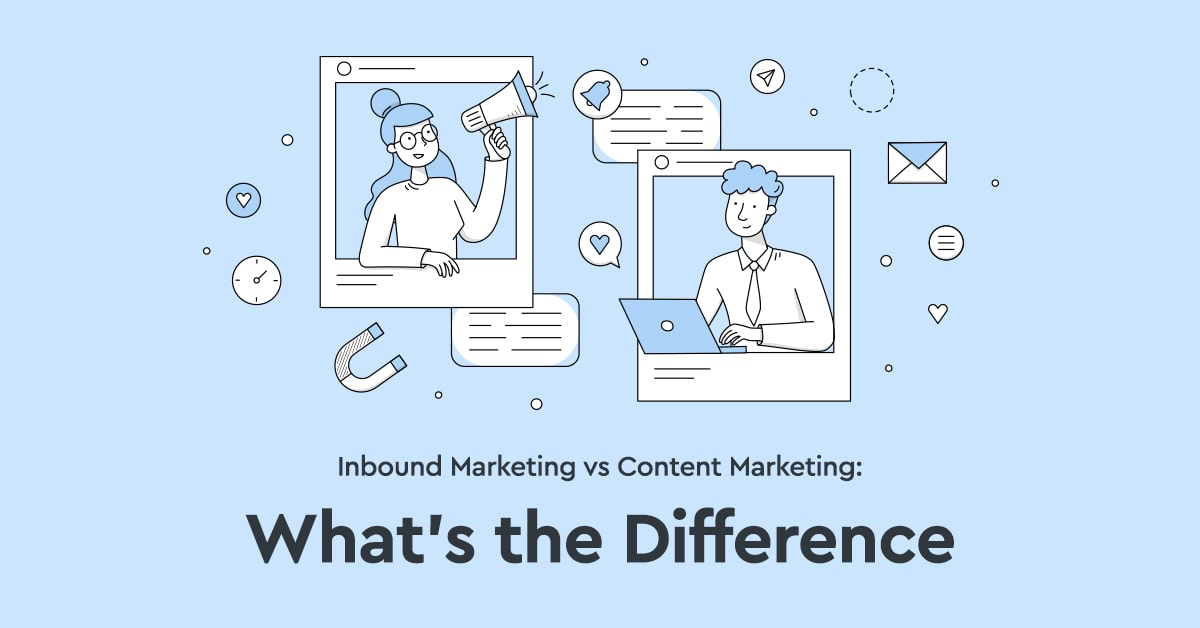Inbound Marketing vs Content Marketing: What’s the Difference?

All you need to know about inbound marketing and content marketing and what makes each strategy different.
Inbound marketing and content marketing are two of the most popular marketing strategies over the past few years.
With the rise of online businesses and digital consumer activities, many businesses resort to these two strategies to gain leads and drive up sales.
But are these two any different? What makes each strategy unique?
Here’s what you need to know about inbound marketing and content marketing:
Definition: Inbound vs Content Marketing
Inbound marketing is defined as a strategy that involves attracting customers by creating value through personalized content and experiences.
In simple terms, it ensures that anything seen by potential customers is made specifically for their unique needs and preferences and to get them interested in your business.
While content marketing shares the same goal, many marketers believe that content marketing is focused and limited only to content creation and distribution. And that, unlike inbound marketing, it does not include other business activities such as website building, website optimization, website maintenance, and organic search engine optimization (SEO).
How to Boost Sales Using Inbound and Content Marketing
Both strategies share the same goal of driving up sales through profitable customer actions. But how can you use each separately to boost your sales performance? Check out the following:
Local SEO
Inbound marketing can be used to improve your “local searchability.” That means making sure your presence is known in your area so that when people look for a business, like a shop, restaurant, or agency nearby, your name will be the first to pop up.
To further improve your lead conversion rate, you can integrate principles of content marketing to cater to the specific needs, interests, and preferences of the customers that are most likely to look for you.
Show them complete and easy-to-understand information to establish trust and build brand confidence. Provide value through relevance and personalized content.
Website building
Websites can be your tool to gain more leads to convert into customers. They can showcase to customers what value you have to offer as a business and why they can trust you as a business.
Proper content ensures that your website performs well on the Search Engine Results Page (SERP). This means that when a potential customer types in a search query, you can rest assured that your website will be on top of the list.
You can also leverage your landing pages to successfully target customers. These web landing pages can be configured to prompt website visitors to fill out sign-up forms, which will play an important role in your lead conversion, customer acquisition, and retention strategy.
Customer profiling, an important part of inbound marketing, can also be done using automation. Check this out:
Pay-per-click ads
Ads are a way to attract customer attention, pique their interest, and lead them to make profitable actions. But the process is a bit more intricate than you can expect.
Inbound marketing ensures that you are targeting the right people, using the right channel, and you’re using the right message to get the results you want. Content marketing can further improve the messaging to optimize your ad’s performance.
Conclusion
Inbound and content marketing will remain important for 2022. Regardless of their differences, these two strategies provide value and relevance to customers who are bombarded with useless ads every day. Want to know more about how you can perform inbound and content marketing with ease? Get started here.
Curious how digital ecosystems can help improve your business?
Check out how digital ecosystems can boost your company performance by getting started here.
Book a Demo